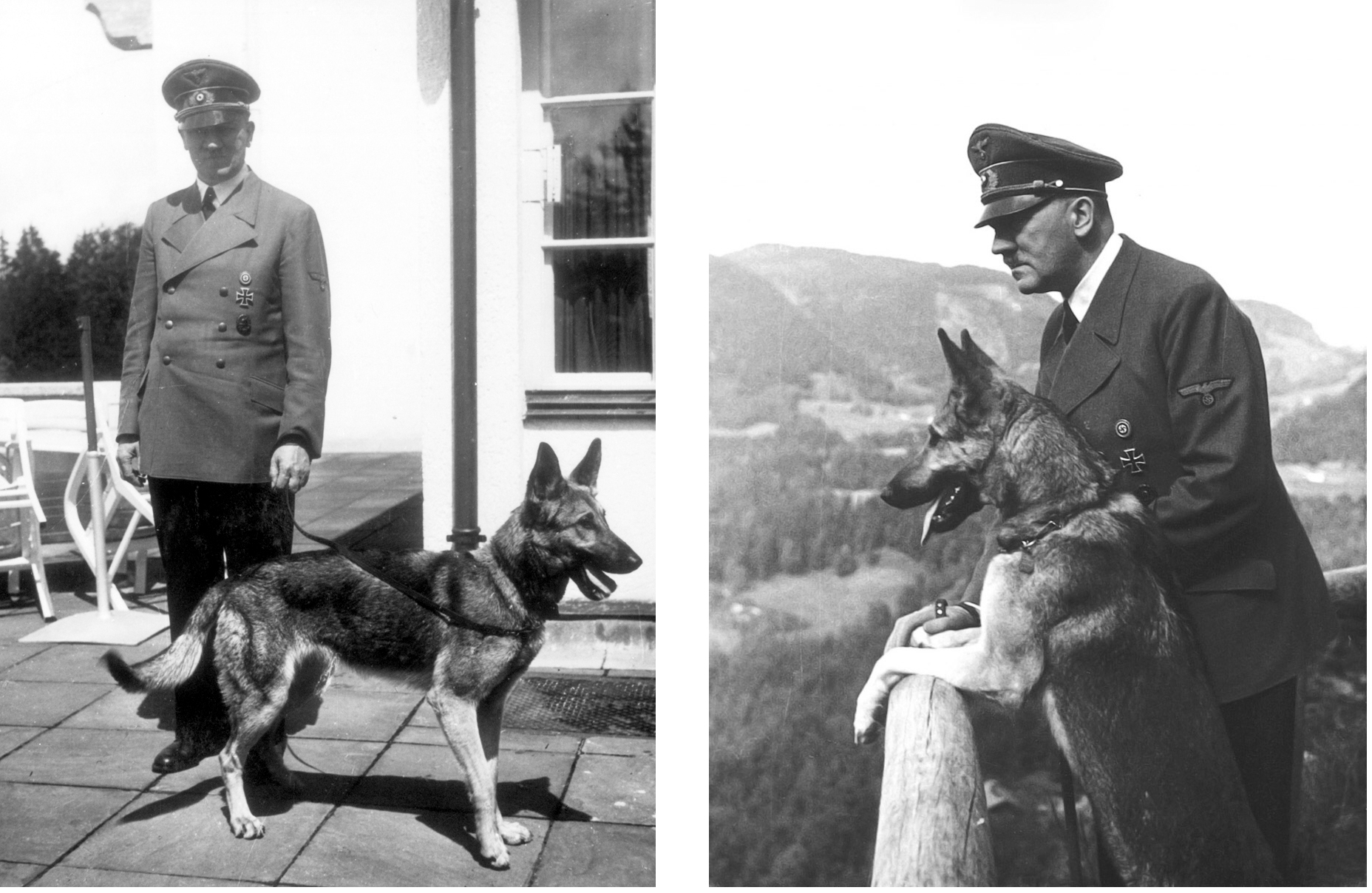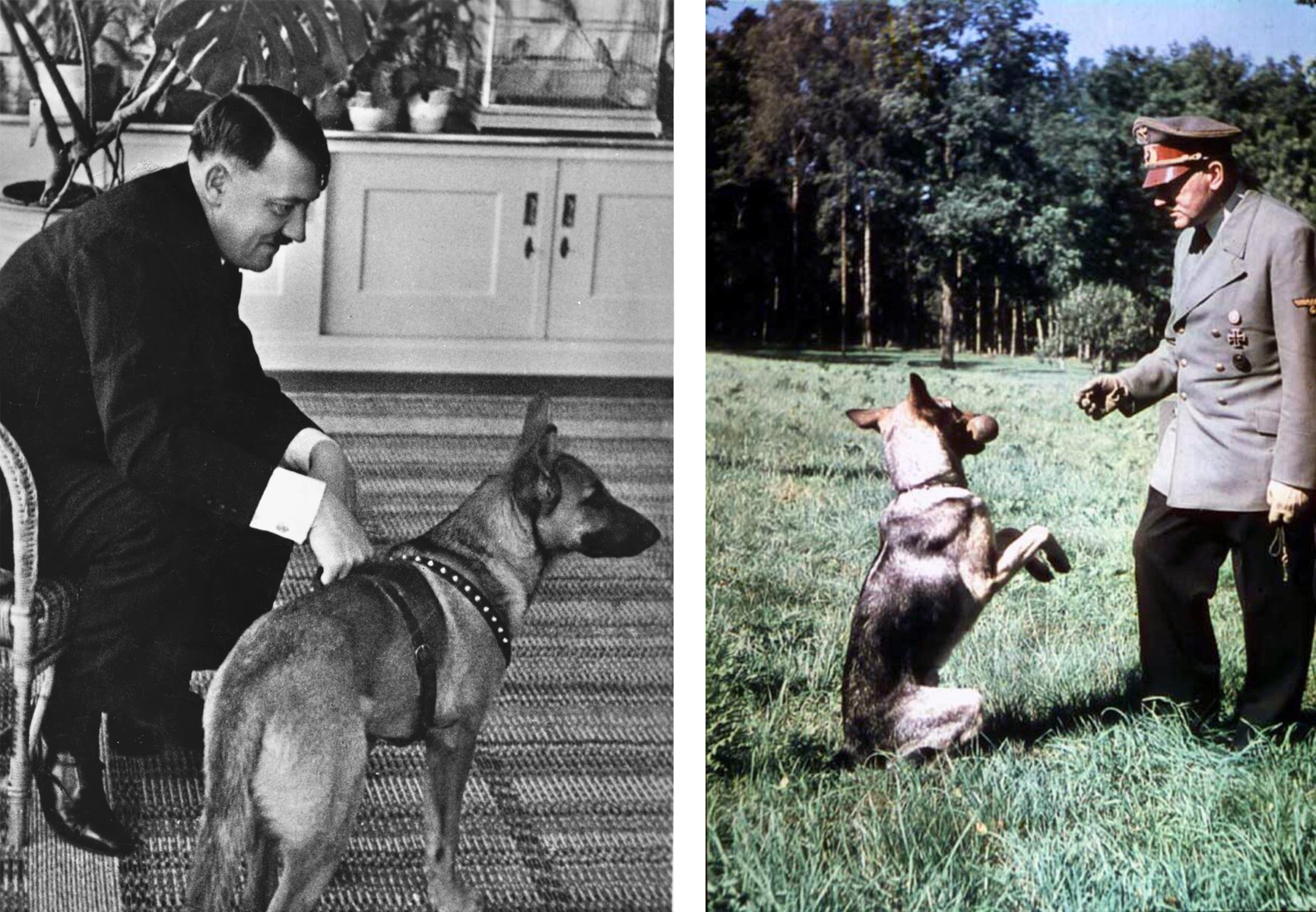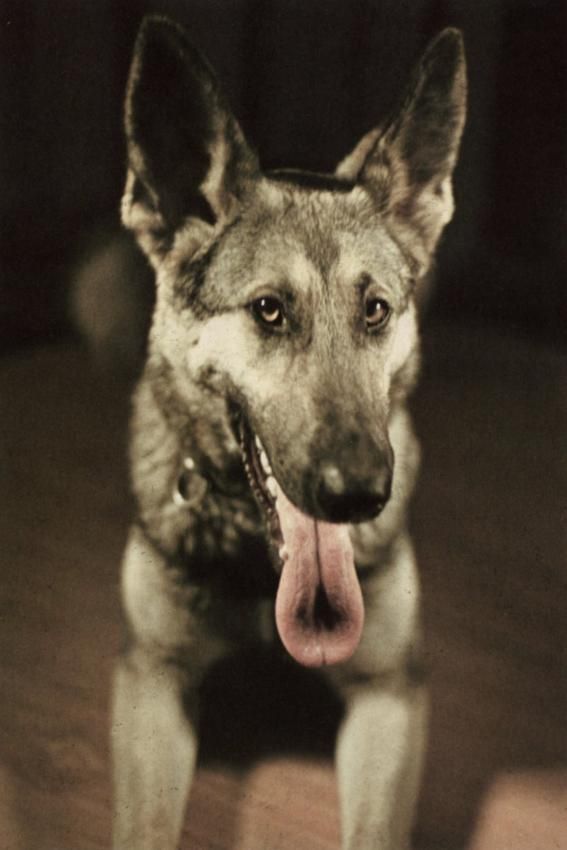Life and Death of Blondi: From Light to Dark Sacrifice
Blondi, a female German Shepherd, entered history for her involuntary role in the propaganda machine of the Nazi regime. Gifted to Adolf Hitler in 1941 by his private secretary Martin Bormann, Blondi quickly became one of the Führer’s closest companions. Yet, behind this master-animal relationship lies a complex story, tinged with paradoxes and tragedies.
Hitler treated Blondi with particular care. She lived by his side, sharing his days at the Berghof, his Alpine residence, and later in the Berlin bunker. He had her perform training tricks, showed her off to his guests, and granted her a privileged place in his daily life. For Blondi—innocent and devoted—Hitler was simply her master, a man who provided food, affection, and protection. She could not, of course, comprehend that he was also the architect of one of the deadliest regimes in history.
The German Shepherd was regarded by the Nazis as a “pure” and “noble” breed of dog. German Shepherds were often associated with qualities such as loyalty, strength, and obedience—traits the regime sought to promote within its ideological vision. By owning a German Shepherd, Hitler symbolically reinforced his attachment to the values of racial purity and Germanic superiority.
Blondi was instrumentalized by Nazi propaganda to soften the Führer’s image and strengthen his public aura. Although his attachment to his dog was genuine, showcasing it gave the people the impression of a sensitive and affectionate man, in stark contrast with the violence of his regime. Photographs of him with Blondi were widely circulated in order to emphasize this more “human” side. This staging aimed to make him appear closer to the German people, presenting him in a familiar and approachable light. By exploiting this relationship, propaganda sought to shape the image of a leader who was empathetic, sharing emotional bonds comparable to those citizens had with their own pets.


In May 1942, Hitler bought another young German Shepherd from a postal worker in Ingolstadt to keep Blondi company. He named her Bella. To care for his dogs when he lacked the time, Hitler relied on his personal dog handler, Fritz Tornow. In January 1945, Blondi followed her master into the Führerbunker, located beneath the Reich Chancellery garden. Hitler kept her constantly by his side, even allowing her to sleep on his bed. This affection, however, was not shared by his companion Eva Braun, who preferred her two Scottish Terriers, Negus and Stasi. According to Armaments Minister Albert Speer, Hitler is said to have declared in March 1945: “I am surrounded by traitors and treachery on all sides. Only my misfortune and Blondi, my German Shepherd, remain loyal to me.”
On April 4, 1945, Blondi gave birth to a litter of five puppies. Hitler, particularly attached to them, named one of the pups “Wolf,” while another was reserved for Gretl Braun, Eva Braun’s sister.
On April 29, 1945, as the Red Army encircled Berlin and the Nazi regime’s defeat became imminent, Hitler ordered his personal physician, Werner Haase, to test a cyanide capsule on Blondi. He wanted to be certain of the poison’s effectiveness before taking it himself. Fritz Tornow led Blondi into the bathroom and forced her mouth open, while Werner Haase crushed the cyanide capsule inside using pliers. Blondi collapsed immediately, lifeless. Hitler entered shortly afterward, observed with a blank expression the effectiveness of the poison, and left in silence. Historical accounts generally agree that Hitler was “inconsolable” after Blondi’s death, reflecting a rare glimpse of humanity in a figure otherwise defined by cruelty.
Blondi’s death cast an even darker shadow over the already heavy atmosphere in the bunker. Erna Flegel, a nurse present at the time, stated in 2005 that Blondi’s death affected the people in the bunker more than Eva Braun’s suicide. For them, Blondi symbolized a form of innocence and normality in an increasingly oppressive environment. Her death was perceived as a grim omen of the regime’s imminent collapse and the fall of their world.
After the Führer’s suicide on April 30, 1945, Fritz Tornow tore Blondi’s puppies from the arms of Joseph Goebbels’ children—who were still playing with them—before executing them in the garden above the bunker. He then administered lethal injections to Eva Braun’s two Scottish Terriers as well as to his own dachshund. On May 2, 1945, after the Battle of Berlin had ended, the remains of two dogs—believed to be Blondi and her son Wolf—were discovered in a shell crater by a Soviet unit.
Blondi, faithful and innocent, paid the ultimate price of her loyalty by being sacrificed in Hitler’s bunker. Used as a tool of propaganda against her will, witness to the final days of the Third Reich, she became a collateral victim of Nazi madness.
